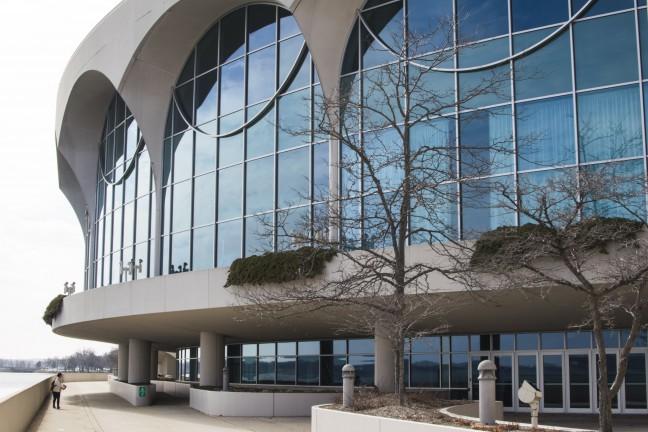Widely considered the most influential American architect to date, honorary University of Wisconsin alum Frank Lloyd Wright boasts many architectural masterpieces around the Madison area. Numerous, noteworthy structures scattered around the isthmus flaunt Wright’s progressive and industry-changing form.
Beyond being unique, Wright’s hand fervently utilized a philosophy called “Organic Architecture” — with structures seemingly emerging from the land. The squat homes were consistently constructed out of native materials, naturally lit with clerestory windows, and temperature controlled via the surrounding environment. Flaunting limited embellishments, the modest architectural style went on to win Wright global recognition.
Wright and his ensuing Prairie School of architecture, as it became known, drew its muse from the surrounding environment.
“Wright looked to the natural world around him for inspiration, including the prairie,” Erik Flesch, a volunteer at Wright’s Wisconsin studio, Taliesin, said.
Heavy horizontal shapes, and sweeping lines within the structure reflect the Midwest landscape in Prairie Style buildings.
Wright pioneered a type of housing which he dubbed “Usonian.” Redefining living space, Usonian housing was synonymous with original and client-tailored dwellings — yet affordable and practically priced for the emerging middle-class of the depression-era 1930s.
“Usonian architecture was designed for the common man with ideas – what Wright called the ‘uncommon man,'” Flesch said. “With the Usonian homes, even a person of average means could own a work of art. Wright elevated affordable materials to achieve noble ideals.”
Wright’s ingenious approach is best preserved in Fallingwater, what is considered one of the most beautiful homes ever built. A prime example of Wright’s organic style, the strikingly beautiful home sits atop a waterfall in southwestern Pennsylvania — sporting multiple cantilevered balconies and stylistic wonders, landing the home on the cover of Time magazine.
From his studio, Taliesin, in Spring Green, Wisconsin, Wright designed some of the most famous structures throughout the United States and elsewhere. Those include: the Johnson Wax Headquarters, The Guggenheim Museum, the Hollyhock house, the Imperial Hotel in Tokyo and countless others.
This is a beginning of a series featuring Madison-based works from America’s greatest architect:
Monona Terrace:

With the City of Madison eager to develop the area around the Capital, Wright proposed the “Dream Civic Center” in 1938. Complete with a city hall, marina, rail depot and auditorium; the County Board narrowly rejected the lofty proposal.
In the coming years, utilizing the post-WWII economic boom, Madison voters went on to approve a $4 million bond to be directed toward the construction of a civic center and auditorium on Lake Monona. The current Monona terrace location received the bid, and Wright found himself heading the design.

Yet, numerous bills and referendums hindered the completion of the project over the next 30 years. Proponents sidelined the project due to height restrictions, concerns of cost and lack of Wright “authenticity” — since the original architect had since passed away, and his previous plans featured many new elaborations.
Anti-Terracers perpetuated fears of a “smelly” structure — asserting that without the construction of a breakwater, debris would collect beneath the building, leading to an unbearable stench.
In the 1980s and 1990s the desire for a Monona development was revitalized as the Madison mayor, Paul Soglin pushed for the realization of Wright’s 1938 dream. Sixty-plus years after Wright’s original proposal — and 35 years after Frank Lloyd Wright’s death — construction on the $67.1 million project began in 1994.

With a redesigned interior by Wright’s underling Tony Puttnam, one of Madison’s most memorable and stylized structures opened in July 1997. An ode to Wright’s inventive and timeless “organic” style, Monona Terrace has happily served Madisonians thereon — overcoming centuries of opposition to become an architectural gem on the isthmus.















